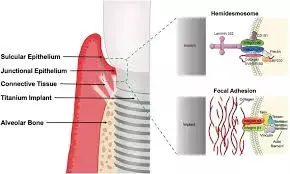- Home
- Medical news & Guidelines
- Anesthesiology
- Cardiology and CTVS
- Critical Care
- Dentistry
- Dermatology
- Diabetes and Endocrinology
- ENT
- Gastroenterology
- Medicine
- Nephrology
- Neurology
- Obstretics-Gynaecology
- Oncology
- Ophthalmology
- Orthopaedics
- Pediatrics-Neonatology
- Psychiatry
- Pulmonology
- Radiology
- Surgery
- Urology
- Laboratory Medicine
- Diet
- Nursing
- Paramedical
- Physiotherapy
- Health news
- Fact Check
- Bone Health Fact Check
- Brain Health Fact Check
- Cancer Related Fact Check
- Child Care Fact Check
- Dental and oral health fact check
- Diabetes and metabolic health fact check
- Diet and Nutrition Fact Check
- Eye and ENT Care Fact Check
- Fitness fact check
- Gut health fact check
- Heart health fact check
- Kidney health fact check
- Medical education fact check
- Men's health fact check
- Respiratory fact check
- Skin and hair care fact check
- Vaccine and Immunization fact check
- Women's health fact check
- AYUSH
- State News
- Andaman and Nicobar Islands
- Andhra Pradesh
- Arunachal Pradesh
- Assam
- Bihar
- Chandigarh
- Chattisgarh
- Dadra and Nagar Haveli
- Daman and Diu
- Delhi
- Goa
- Gujarat
- Haryana
- Himachal Pradesh
- Jammu & Kashmir
- Jharkhand
- Karnataka
- Kerala
- Ladakh
- Lakshadweep
- Madhya Pradesh
- Maharashtra
- Manipur
- Meghalaya
- Mizoram
- Nagaland
- Odisha
- Puducherry
- Punjab
- Rajasthan
- Sikkim
- Tamil Nadu
- Telangana
- Tripura
- Uttar Pradesh
- Uttrakhand
- West Bengal
- Medical Education
- Industry
Oral bisphosphonate, periodontitis, diabetes and super-hydrophilic implant surface tied to peri-implant MBL: Study

Oral bisphosphonate intake, periodontitis, diabetes and super-hydrophilic implant surface tied to peri-implant MBL suggests a study published in the Clinical Oral Implants Research.
A study was done to evaluate the influence of patient and implant-related factors on the changes in marginal bone levels (MBL) at implants with a follow-up ≥5 years.
At baseline (within 6 months from prosthetic insertion) and long-term (≥5 years after implant placement) visits, interproximal (mesial and distal) MBL were radiographically evaluated. To analyze factors predicting MBL change, the site (either mesial or distal) showing the highest MBL change (hChMBL site) was identified for each implant. Multilevel regression models were built to explain MBL change as well as the probability for a bone loss ≥2 mm at long-term. Results: 942 implants in 312 patients with a mean follow-up of 8.02 ± 2.5 years were analyzed. MBL change was significantly predicted by baseline MBL, oral bisphosphonate (BP) intake, history of periodontitis, diabetes, and super-hydrophilic implant surface.
Higher risk for a bone loss ≥2 mm was observed in patients with history of periodontitis (OR = 9.52, 95% CI 0.72–3.79) and taking BP (OR = 6.84, 95% CI 0.21–3.63). Mandibular implants had higher odds for bone loss ≥2 mm compared to maxillary implants (OR = 3, 95% CI 0.39–1.87). The findings of the present study contribute to the identification of specific clinical scenarios at higher risk for implant-supporting bone loss that need to be strictly monitored during maintenance
Reference:
Trombelli, L., Farina, R., Tomasi, C., Vignoletti, F., Paolantoni, G., Giordano, F., Ortensi, L., & Simonelli, A. (2024). Factors affecting radiographic marginal bone resorption at dental implants in function for at least 5 years: A multicenter retrospective study. Clinical Oral Implants Research, 00, 1–12. https://doi.org/10.1111/clr.14327
Dr. Shravani Dali has completed her BDS from Pravara institute of medical sciences, loni. Following which she extensively worked in the healthcare sector for 2+ years. She has been actively involved in writing blogs in field of health and wellness. Currently she is pursuing her Masters of public health-health administration from Tata institute of social sciences. She can be contacted at editorial@medicaldialogues.in.
Dr Kamal Kant Kohli-MBBS, DTCD- a chest specialist with more than 30 years of practice and a flair for writing clinical articles, Dr Kamal Kant Kohli joined Medical Dialogues as a Chief Editor of Medical News. Besides writing articles, as an editor, he proofreads and verifies all the medical content published on Medical Dialogues including those coming from journals, studies,medical conferences,guidelines etc. Email: drkohli@medicaldialogues.in. Contact no. 011-43720751


